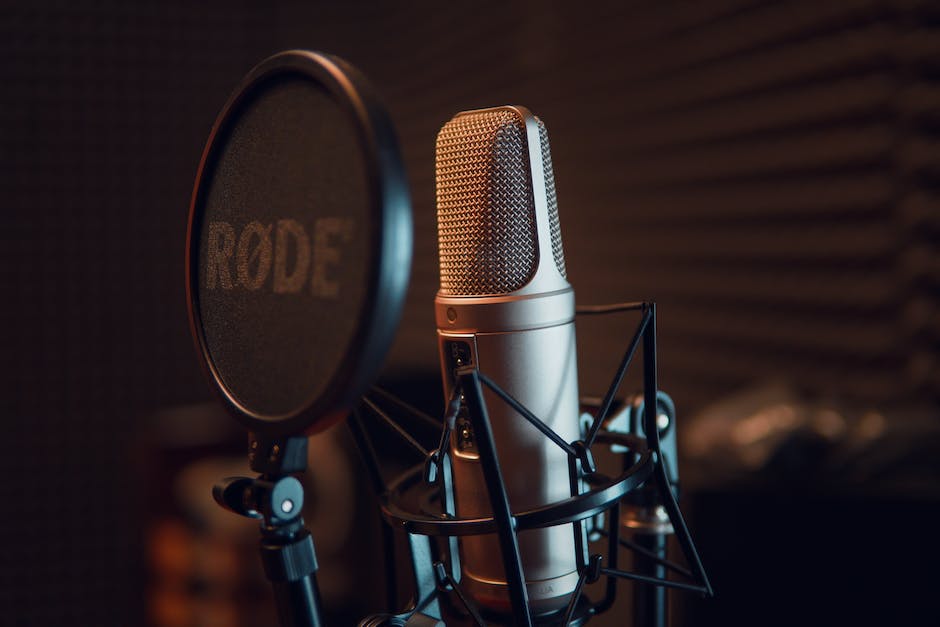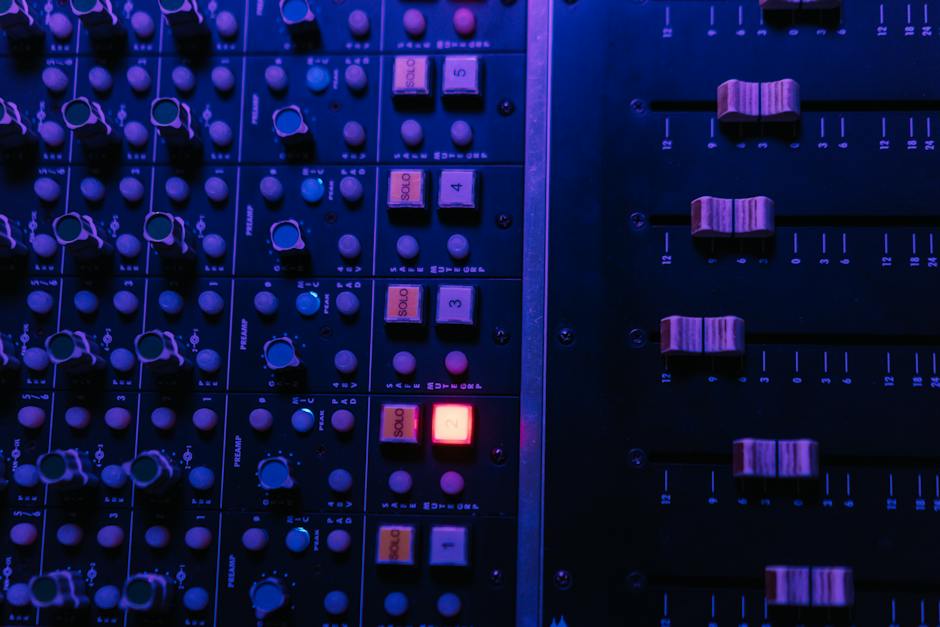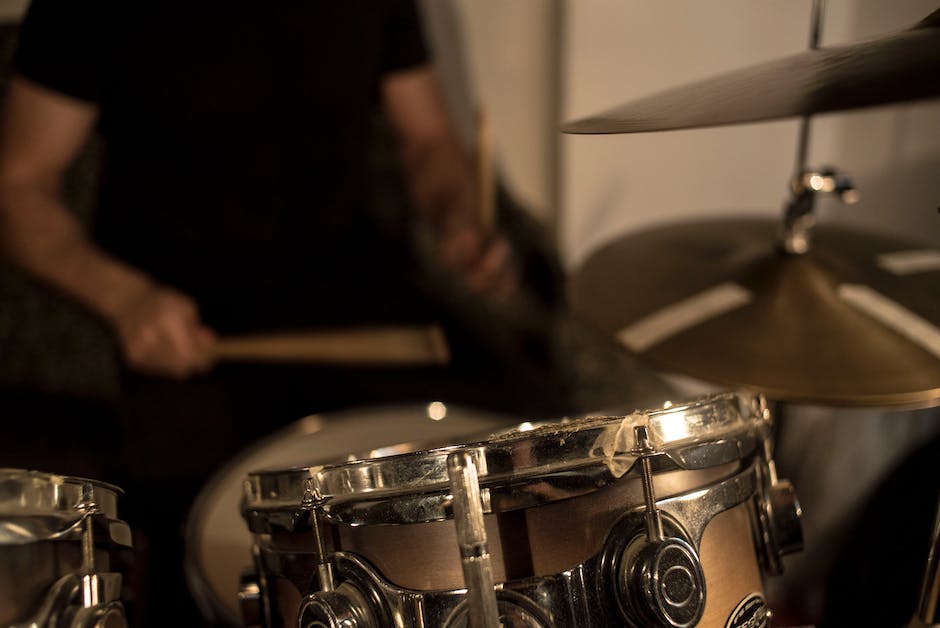It is undeniable that drums form the heartbeat of any form of music, providing rhythm and energy. Mastering the art of recording those killer drum punches that reverberate in your soul and ignite your senses, however, is a science in itself. This journey navigates through understanding the drum recording environment, ideal selection, and setup of equipment, the nitty-gritty of microphone placement and drum tuning techniques, the role of mixing and editing in achieving the perfect drum punch. We will also delve into acknowledging common mistakes encountered in drum recording, essentially contributing valuable knowledge to that dream in every musician’s heart – the perfect drum recording.
Understanding the Drum Recording Environment
Striking the Right Note: Essential Factors in Creating an Optimal Drum Recording Environment
The symphonic cacophony brought forth by beating drumheads is a vibrant language all its own, a pulsating heart at the core of every spectacular music composition. From thunderous, heart-jolting explosions to soft, whispering rustles that tiptoe in the backdrop, drums have a magic that is indeed one-of-a-kind. Capturing that magic, however, isn’t a job for the faint-hearted. It’s an intricate dance where several elements commingle, making sure that the pounding roar of each drum strike stands out with pristine clarity.
First and foremost, the metamorphosis of an ordinary room into an optimal drum recording environment begins with the drum kit itself. Good quality drums, complete with detailed tuning, are quintessential to achieve the desired timbre and pitch. The drumhead’s tension, the stick’s touch, the room’s resonance – every minute detail adds to the overall sound, creating a symphony of beats.
Beyond the drum kit lie two essentials in imparting life to the rhythm – microphones and their position. The choice of microphones could be as varied as the tunes themselves, with some swaying towards dynamic mics for robust, vivacious beats and others preferring ribbon mics for capturing a more delicate, softer touch. Then comes the art of positioning. An intimate dance ensues between microphones and drums, each positioning and repositioning until they find their perfect spot, the place where each drum sound comes alive in full vibrancy.
Stepping into the realm of acoustic treatment, it’s a world that lays the groundwork to capture the drum’s heart-stirring rhythm. Absorbers, diffusers, bass traps – each element in this territory has a role to play. A well-placed absorber can restrain overly resonant beats while a thoughtfully deployed diffuser will scatter sound waves, thus preventing unwanted echoes. Bass traps, on the other hand, aim to tame low-frequency sound, ensuring the rhythms don’t overpower but complement other beats.
Then lies another critical aspect, often overlooked yet highly influential – the drum room’s size and shape. Spaces carry distinctive personalities, something which lends a unique touch to the recording. Ceilings, walls, flooring – each plane has its sonic characteristics, with tall ceilings typically fostering a booming resonance and reflective surfaces adding an unexpected echo.
Lastly, the crucial role of the recording engineer cannot be overstated. This maestro plays the invisible hand that melds all the pieces together, fostering balance between rhythm and resonance. An expertly skilled engineer will massage the drum sounds, secure flawless mic placements, and remain alert for any anomalies, ensuring that the drum’s primal roar stands out but doesn’t overshadow.
In conclusion, curating an optimal drum recording environment is an intimate tango between art and science. It’s a harmonious symphony of various factors – the right equipment, the ideal music room, precise microphone placement, meticulous room treatment, and an adept engineer poised to capture the striking rhythm. Each piece contributing to a grand tapestry where music tells its engaging stories—and the pounding heart of the drum resonates just right.

Selection and Setup of Drum Recording Equipment
When it comes to the symphony of a studio recording session, the lead vocalist may take center stage, but nobody drums up excitement quite like the percussive drum kit. Let’s delve deeper into this harmonious world and highlight the remaining key equipment required for top-notch drum recording. We will also touch upon the best ways to orchestrate their setup to create perfect symphony and resonance.
After ensuring a fine-tuned drum kit and a meticulously mic’d setup, the next crucial piece of equipment to consider is the preamplifier. A microphone preamplifier, or preamp, works as a mediator between the microphone and the recording interface. When the microphone captures the resonant beats of the drum and transforms them into electrical signals, those signals are incredibly delicate. A preamp takes on the role of the maestro, amping up these signals to a level where they can be smoothly interpreted and recorded by the audio interface. Quality preamps produce a warm, rich sound that maintains the crispness of each drum impact.
Speaking of the audio interface, this integral tool is where the magic truly happens. The beating heart of your setup, the audio interface converts those amplified electrical signals from analog into a digital format suitable for a computer to process. This digital format is where the producer and mixing engineer can sculpt and mold your rhythms into the musical masterpiece it was meant to be. In an era where digital technology reigns supreme, investing in a high-quality audio interface is non-negotiable for world-class drum recording.
Next, we look at the significance of one of the unsung heroes in the recording studio – the headphone. For a drummer, the headphone presents the metronomic pulse and the performance of the rest of the band. This assists them in staying in time and blending seamlessly into the rhythmic structure of the song. Comfort, high isolation, and good audio quality are the recipe for the best studio headphones.
Setting up these vital gears for drum recording necessitates great care. The placement of the preamp and audio interface should ideally be close to the mixer and the computer for easy access and streamlined workflow. The drummer’s headphones should also be connected to an extension cable to ensure mobility while performing.
Last but not least, high-quality cables are required to interconnect all these pieces of gear. Premium cables contribute to minimal signal loss and reduced interference, resulting in pure, unadulterated drum sounds in your recordings.
So, is drum recording an intricate art demanding a medley of key equipment and mastery over their positioning? Absolutely, but with the right gear and thoughtful setup, you, too, can hit all the right notes and create a beat worth dancing to.

Techniques for Mic Placement and Tuning Drums
In the audacious, multisensory world of music, capturing the rhythm and resonance of the drums is an art form all its own, a dance of sound and silence punctuated by the percussive heartbeat of the melody. This dance is fundamentally shaped by two key elements: microphone placement and drum tuning, whose nuanced interplay deeply affects the quality of drum recording.
As the vivacious pulse of the composition, the drum deserves immense consideration. The rhythmic cadence is determined not only by the skill of the drummer, but inescapably by how well the drum itself is tuned. Juxtapose an untuned kit with a meticulously harmonized one, and it’s akin to comparing rough sketches with a masterful, vibrant painting. Tuning impacts the pitch, tone and overall soul of the drum’s sound in profound ways. A subtle tightening or loosening of the drum head can transform a flat note into a robust, rounded sonic boom that reverberates with full, resonant strength.
The role of the drum-tuning artist can, thus, never be overstated. Their hands are the conduit through which the drum’s voice is fine-tuned and shaped, their decisions directly influencing how the drum will respond to each strike. Precise tuning ensures accurate tone production, respects the spectrum of higher and lower frequencies, and accentuates the harmonics of each drum, all of which contribute to a more refined and dynamic recording.
While drums sing on their song, microphones are the attentive audience, absorbing every nuance, every timbre, every embodiment of resonance. Their placement around the drum kit is the quintessence of music production, but it’s no random deed. It requires sensitive comprehension of the acoustic character of the drum kit, combined with an understanding of how sound radiates in various directions from different parts of the kit.
Subject to the specific drum, genre, and desired tone, the microphone placement will differ, each location capturing a distinctive aspect of the drum’s character. To highlight the percussive attack of the drum, a microphone can be directed towards the drum’s head. To capture more harmonic undertones and resonance, the microphone may be tilted towards the drum’s shell. The specifics may vary, but the objective remains unvarying: to create a tonally balanced recording in which the drums don’t just play, they speak.
Deploying multiple microphones can add depth and dimensionality, mirroring the diverse tonal landscape of the drum kit. Front-of-kit mics for an overall perspective, spot mics for granular detail, overhead mics for cymbals and ambient noise- each positioned thoughtfully contributes to the sonic tapestry of the recording. This strategic placement ensures that varying frequencies are harnessed, and the sonic panorama of the drum kit is harmoniously recorded, delivering the warmth, depth and rousing power that a drum can provide.
In the symphony of music production, it is clear that the subtleties of drum tuning and microphone placement, while somewhat invisible to the listener, are intrinsic to creating a recording that brims with life. They’re the unsung heroes, the cornerstone of a compelling drum recording, be it solitary or within a grand orchestral ensemble. The understanding and implementation of these two critical elements, therefore, can elevate a drum recording from mundane to magical. Nurturing the auditory relationship they share is not an option, but a necessity for the passionate pursuit of quality drum recording.

The Role of Mixing and Editing in Drum Recording
Building off the already profound dynamics in drum recording, let us delve into the artistry of mixing and editing – an often-unsung hero in achieving the perfect punch, crisping the crackling hits and smoothing out the rumbling toms. This intricate process is akin to making a great dish where each ingredient must come together flawlessly to get the perfect taste.
Mixing is a subtle science. It involves bringing the recorded drum tracks together and levelling them out, letting the individual timbre and tone of each drum and cymbal shine through while maintaining a profound coordination. It’s multi-faceted and it’s critical.
Begin with audacious panning. This magic tool can situate the drum sounds, imitating the perception of standing before a live kit. The fascinating hi-hats might be placed slightly to the left, the vigorous snare centered, and the mighty kicks balanced uniformly. Multiple-tom sets might be spread out, simulating the sensation of traveling sounds. It’s a panoramic symphony right within the depth of your headphones.
Let’s consider EQ (equalization). This can cleanse the drum tracks, ensuring the piquancy of sound sticks right where it should. It can reduce unbalancing frequencies that eat into the clarity and emphasize the commanding ones that create punch. EQ can round out the kick drum, adding warmth, or sharpness to the snare. Overtones and undertones, may let the highs soar or lows rumble — it’s all about balance.
Then comes compression, the game changer. Compression can transform a drum recording from good to great, giving it the requisite punch. It controls the dynamic range, the subtle difference between the loudest and softest audio levels. It can tighten the kicks, add attack to the snare, and bring power to the toms, yielding a stunning, crisp resonance. It’s like painting with sound, bringing out the texture and depth of the drum parts.
Now, some prefer the delicate subtlety of reverb to add a spatial aura around the drums, placing them in a virtual ‘room’. The cavernous boom of a huge hall or the tight slap-back of a small studio – each imparts a fresh flavour, depth, and character to the sound.
Finally, editing – a nuanced task demanding an artistic temperament coupled with technical proficiency. Gritty drum hits may need to be tightened or moved to match the rhythm, maintaining a seamless groove. Crossfades can be employed to smoothen transitions between cuts, making it sound like one cohesive performance, even if it was several parts stitched together.
Mixing and editing are the last crucial stages of drum recording, finessing the raw, robust beauty into a polished, powerful masterpiece. No drum part stands alone, and it is through this process that their collective rhythm and resonance reach full harmony. This orchestrated command of technology and artistry can bring forth the punch in drum recording that thrills the audience, breathes life into a track, and resonates far beyond the studio. The power to evoke emotion, trigger memories, and unite people, that’s the ultimatum of music. It’s imperative to respect, appreciate, and master this artistry of mixing and editing – it is, after all, where science meets soul.

Common Drum Recording Mistakes and How to Avoid Them
Rowdy Thunder: The Art of Drum Recording Mistakes and How to Dodge Them
Astoundingly enough, the drumming realm is rife with sonic pitfalls that can turn a passionate beat into a lackluster rhythm unfit for even the most generous ear. It’s no secret—an ensemble without a potent drum sound is akin to a songbird without a warble. Thus, mastering the art of recording drums is as essential as the heart pumping life to the body.
Despite musicians acing the more apparent elements of drum recording— from selecting an exquisite drum kit, mastering tuning intricacies, establishing harmonic resonance to purposefully placing microphones— there are labyrinthine detours they often overlook. A shift in focus towards these overlooked aspects, such as audacious panning techniques and equalization, may seem trivial but pack quite a punch in refining the overall drum sound.
Be it the rolling storm of a rock concert or the nimble pitter-patter of a jazz club, the drummer’s presence is evoked through the speakers to listeners far and wide. What then, might you ponder, can reproduce such a haptic sonic experience in a recording? Enter the realm of audacious panning techniques, an often overlooked superstar in the drum recording domain. A common misstep lies in being overly conservative with panning, leaving the drum track flat and lacking dimension. However, an imaginative pan— sending the snare slightly left, nudging the floor tom little to the right— can have the uncanny ability to transport listeners right in front of a live drum kit experience.
Diving into the nitty-gritty, musicians often leave the equalization (EQ) to the wind and end up with drum tracks sounding muddier than a rain-soaked music festival. Precise EQing eliminates these conflicting frequencies, allowing each drum element its moment of glory. By judiciously carving out an EQ space for each drum element, muddiness lifts, clarity emerges, and the drum track starts to sing a balanced symphony.
Furthermore, the mistaken fear of compressors often leads musicians to overlook their transformative powers. Just as a spice masterfully added brings out the flavor in a dish, a finely tuned compressor adds punch to the drum track, giving it the gutsiness needed to energize the mix.
Next on the common oversight list is the notorious reverb. An oft-opined myth: ‘drums don’t need a reverb.’ On the contrary, a well-judged reverb can add a spatial aura and depth, transforming a placid beat into an ecstatic pulse reverberating throughout the recording.
Recording drums isn’t just about the recording itself—it’s the journey that follows. Even the most exquisitely recorded drums would be a mere skeleton without the flesh and sinew of attentive editing. By tightening drum hits, adjusting timing, and adding a touch of humanization, musicians can bring a drum machine’s precision and a hand drummer’s soul into harmony, converting raw drum tracks into rhythmically robust spectacles.
Mixing and editing are to drum recording what flour is to bread. They weave together the raw beauty of drum recordings, a delicate dance that defines the beat’s weight and balances the rhythm. Get this wrong, and the beat loses its pulse; it no longer mirrors the throbbing hearts of listeners. The drum track starts to careen down a slippery slope, failing to evoke an emotional response from listeners.
Indeed, the power of music lays not just in the instrumentals or the lyrics—it’s the emotion compelling the bodies to sway, the memories brought back with each note, the unity it fosters amongst the listeners. It’s the way the drumbeats match heartbeats, pulsing emotion and igniting the spirit. Drum recordings, with their immersive beats, hold this power, and with careful avoidance of common pitfalls, musicians can utilize this potential to unite, inspire, and transform.

Mastering the art of drum recording, while complex, can be decoded and mastered with understanding, patience, and practice. By diving deep into the recording environment, meticulous equipment setup, strategic microphone placement, skillful drum tuning, and understanding the importance of mixing and editing, we can overcome common pitfalls and challenges. As we refine this craft, we progress closer to capturing that resonating, explosive drum punch, truly embodying the heartbeat of the music we create. After all, the beauty of music lies in its perfection, and achieving that perfect drum recording is nothing short of making sweet, sweet music.

Comments.
Currently there are no comments related to this article. You have a special honor to be the first commenter. Thanks!